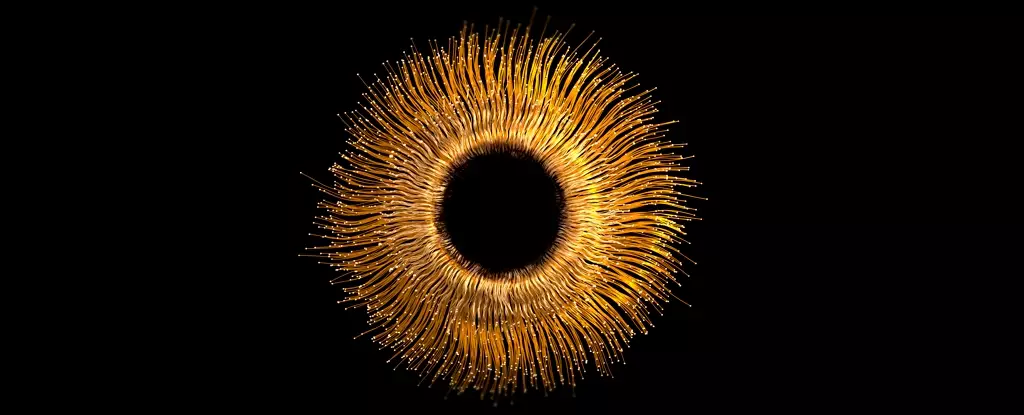In the ever-evolving field of medical science, the prospect of using gold dust to combat age-related macular degeneration (AMD) might initially provoke skepticism. Yet, recent findings from a mouse study have ignited discussions about a potentially groundbreaking treatment that could change how we approach vision restoration. Given that millions are affected by AMD worldwide, the search for effective therapies has never been more urgent. Traditional methods to slow the progression of AMD lack the capacity to restore lost vision, leaving patients with few options.
Enter biomedical engineer Jiarui Nie from Brown University, who introduces an innovative non-invasive treatment method that utilizes incredibly fine gold nanoparticles laced with antibodies. This ingenious approach, while unconventional, could serve as a pivotal moment in how we tackle retinal diseases. It challenges the notion that advanced surgical intervention or genetic modification is a prerequisite for recovery, suggesting instead that perhaps elegance and simplicity could be the answer.
How It Works: A Simple Yet Profound Technique
The mechanics of this treatment are as fascinating as they are promising. By injecting gold nanoparticles, which are thousands of times thinner than human hair, into the vitreous chamber of the eye, researchers can effectively target and stimulate specific eye cells. The introduction of an infrared laser device to activate these particles mirrors the natural functions of photoreceptors, which are the cells typically damaged in conditions like AMD. This blend of nanotechnology and non-invasive treatment raises the bar on what is considered possible in vision restoration.
While the implications seem extraordinary, we must remember that the research phase primarily involves mice with engineered retinal disorders. The success of restoring their vision is a significant milestone; however, translating these results to humans will undoubtedly take time and meticulous oversight. Nonetheless, there’s a burning optimism surrounding the potential transition from the laboratory to the clinic.
Breaking Barriers: The Advantages of Invasiveness
One of the standout features of Nie’s proposed therapy is its lack of invasiveness. Traditional methods often involve complex surgeries or the need for larger implants that carry their own set of risks and complications. In comparison, this treatment could minimize the disruption to the eye—a crucial consideration given the delicate nature of the human eye. It represents a shift away from invasive solutions toward a realm where patient comfort is a priority, all while maintaining efficacy.
Additionally, unlike many existing therapies, this novel approach promises a broader field of vision. This is vital; many treatments tend to focus on singular aspects of vision restoration, overlooking the holistic needs of the patient’s sight. By offering a multi-faceted solution that enhances overall visual quality, there is a chance to greatly improve the quality of life for millions who suffer from vision impairment.
Charting the Future: The Road Ahead
However, it is crucial to temper our enthusiasm with realism. While the findings are encouraging, significant hurdles remain before human application. Regulatory approval, extensive clinical trials, and long-term safety assessments are not mere formalities; they are the bedrock necessary for medical innovation. Each step must be undertaken with care to ensure the solution is both effective and safe for the end-user.
Yet, as we stand at the precipice of this potential breakthrough, we find ourselves compelled to engage with the implications of such technology. As more research emerges and new techniques are developed, it is likely we will witness a technological renaissance in how we treat not just AMD, but a myriad of retinal diseases. This is not merely a triumph of science but a testament to the unyielding human spirit—a collective effort to reclaim the lost gift of sight.
In the grander context of medical advancements, Nie’s discovery resonates beyond the confines of the laboratory. It symbolizes hope for individuals navigating the often dim world of vision loss. Each flash of light, each moment of clarity regained, serves as a powerful reminder that innovation can illuminate even the darkest corners of health challenges.


Leave a Reply